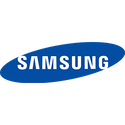Revenue Decline of Global Top 10 IC Design Houses Expanded to Nearly 10% in 4Q22
The global economy has faced increased inflation risks and downstream inventory corrections in 2H22, which have affected IC design houses faster than wafer foundries, as they are far more sensitive and responsive to market reversals. TrendForce reports that adverse factors such as weak overall consumption, restrictions from China, and the slowdown of corporate IT spending and CSP demand have impacted the revenue performance of the world's top 10 IC design houses in 4Q22, leading to a QoQ decline of 9.2%, or approximately US$33.96 billion.
TrendForce predicts that the revenue of these top 10 companies keep declining—though with a slight convergence—into 1Q23, owing to ongoing inventory corrections across the entire supply chain as well as Q1 being the traditional off-season for consumer demand. Demand will continue to be weak despite new product launches and inventory replenishment in the supply chain.
TrendForce predicts that the revenue of these top 10 companies keep declining—though with a slight convergence—into 1Q23, owing to ongoing inventory corrections across the entire supply chain as well as Q1 being the traditional off-season for consumer demand. Demand will continue to be weak despite new product launches and inventory replenishment in the supply chain.





























































